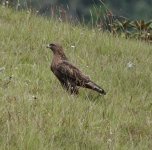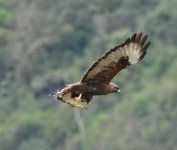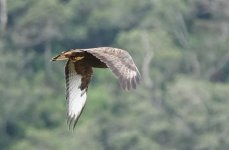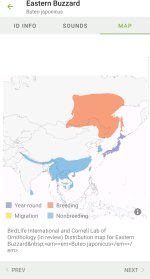I would like some help in the identification of the Buzzard sp photographed on Horton's Plain 10 days ago. Historically it has been considered that Himalayan Buzzard wintered here and this is how it was called by local guides. I had my doubts as it didn't attune with my memories of that taxon from Bhutan. According to the local eBird reviewer "The species you reported was flagged for review and does not occur in Sri Lanka. Earlier it was believed that Himalayan Buzzard is the Buteo that occurs here but with observations in last two decades or so, now its widely accepted that Common Buzzard (Steppe) is the one visiting Sri Lanka. However this has not updated in most of the literature yet. Only other Buteo we get here is Long-legged Buzzard which is rare. I hope you would change this to Common Buzzard if you feel that is the right thing to do."
The reference material eg Raptors of the World is hampered by not fully recognising the split of Himalayan.
Returning to the bird itself - it is an obvious dark phase- relatively short, broad wings and a subterminal band on the tail. There is no sense of any of the rufous typical of 'vulpinus' and the upper wing pattern is 'odd' for that form IMHO. However, I am not sure that I have seen a vulpinus that is this dark.
Structurally the bird seems wrong for LL Buzzard, even if some of the plumage seems a better fit.
Any pointers would be most welcome.
The reference material eg Raptors of the World is hampered by not fully recognising the split of Himalayan.
Returning to the bird itself - it is an obvious dark phase- relatively short, broad wings and a subterminal band on the tail. There is no sense of any of the rufous typical of 'vulpinus' and the upper wing pattern is 'odd' for that form IMHO. However, I am not sure that I have seen a vulpinus that is this dark.
Structurally the bird seems wrong for LL Buzzard, even if some of the plumage seems a better fit.
Any pointers would be most welcome.










